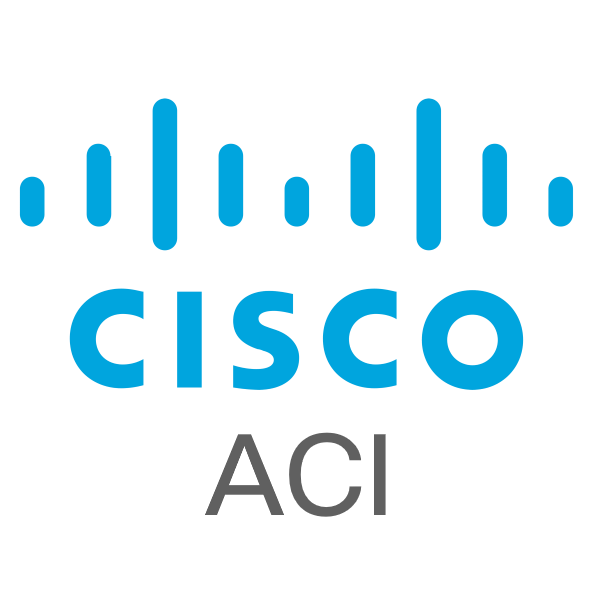Home / Shop
- Description
What you’ll learn in this course
The Implementing Cisco Application Centric Infrastructure (DCACI) v1.1 course shows you how to deploy and manage the Cisco® Nexus® 9000 Series Switches in Cisco Application Centric Infrastructure (Cisco ACI®) mode. You will learn how to configure and manage Cisco Nexus 9000 Series Switches in ACI mode, how to connect the Cisco ACI fabric to external networks and services, and the fundamentals of Virtual Machine Manager (VMM) integration. You will gain hands-on practice implementing key capabilities such as fabric discovery, policies, connectivity, VMM integration, and more. This course earns you 40 Continuing Education (CE) credits towards recertification.
This course helps prepare you for the following exam:
- 300-620 Implementing Cisco Application Centric Infrastructure (DCACI)
Course duration
- Instructor-led classroom: 5 days in the classroom with hands-on lab practice
- Instructor-led virtual classroom: 5 days of web-based classes with hands-on lab practice
How you’ll benefit
This course will help you:
- Gain the skills and hands-on practice integrating the enhanced, automated capabilities of Cisco Nexus 9000 Series Switches in ACI mode for quicker application deployment
- Get the knowledge for protocols, solutions and designs to acquire professional-level and expert-level data center job roles
- Earn 40 CE credits toward recertification
What to expect in the exam
The 300-620 DCACI exam certifies your knowledge of working with Cisco switches in ACI mode including configuration, implementation, and management.
After you pass 300-620 DCACI, you earn the Cisco Certified Specialist – Data Center ACI Implementation
certification and you satisfy the concentration exam requirement for the CCNP Data Center certification.
Who should enroll
- Network Designers
- Network Administrators
- Network Engineers
- Systems Engineers
- Data Center Engineers
- Consulting Systems Engineers
- Technical Solutions Architects
- Cisco Integrators/Partners
- Field Engineers
- Server Administrators
- Network Managers
- Storage Administrators
- Cisco Integrators and Partners
Technology areas
- Data center
Course details
Objectives
After taking this course, you should be able to:
- Describe Cisco ACI Fabric Infrastructure and basic Cisco ACI concepts
- Describe Cisco ACI policy model logical constructs
- Describe Cisco ACI basic packet forwarding
- Describe external network connectivity
- Describe VMM Integration
- Describe Layer 4 to Layer 7 integrations
- Explain Cisco ACI management features
Prerequisites
To fully benefit from this course, you should have the following knowledge and skills:
- Understanding of networking protocols, routing, and switching
- Familiarity with Cisco Ethernet switching products
- Understanding of Cisco data center architecture
- Familiarity with virtualization fundamentals
The following Cisco courses may help you meet these prerequisites:
- Implementing and Administering Cisco Solutions (CCNA)
- Understanding Cisco Data Center Foundations (DCFNDU)
Outline
- Introducing Cisco ACI Fabric Infrastructure and Basic Concepts
- What Is Cisco ACI?
- Cisco ACI Topology and Hardware
- Describing Cisco ACI Policy Model Logical Constructs
- Cisco ACI Logical Constructs
- Tenant
- Describing Cisco ACI Basic Packet Forwarding
- Endpoint Learning
- Basic Bridge Domain Configuration Knob
- Introducing External Network Connectivity
- Cisco ACI External Connectivity Options
- External Layer 2 Network Connectivity
- Introducing VMM Integration
- VMware vCenter VDS Integration
- Resolution Immediacy in VMM
- Describing Layer 4 to Layer 7 Integrations
- Service Appliance Insertion Without ACI L4-L7 Service Graph
- Service Appliance Insertion via ACI L4-L7 Service Graph
- Explaining Cisco ACI Management
- Out-of-Band Management
- In-Band Management
Lab Outline
- Validate Fabric Discovery
- Configure Network Time Protocol (NTP)
- Create Access Policies and Virtual Port Channel (vPC)
- Enable Layer 2 Connectivity in the Same Endpoint Group (EPG)
- Enable Inter-EPG Layer 2 Connectivity
- Enable Inter-EPG Layer 3 Connectivity
- Compare Traffic Forwarding Methods in a Bridge Domain
- Configure External Layer 2 (L2Out) Connection
- Configure External Layer 3 (L3Out) Connection
- Integrate Cisco Application Policy Infrastructure Controller (APIC) With VMware vCenter Using VMware Distributed Virtual Switch (DVS)

